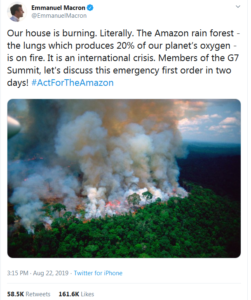by Stockholm University, August 27, 2019 in WUWT/fromNature
34 million years ago the warm ‘greenhouse climate’ of the dinosaur age ended and the colder ‘icehouse climate’ of today commenced. Antarctica glaciated first and geological data imply that the Atlantic meridional overturning circulation, the global ocean conveyor belt of heat and nutrients that today helps keep Europe warm, also started at this time. Why exactly, has remained a mystery.
“We have found a new trigger to explain the start-up of the Atlantic current system during the greenhouse-icehouse climate transition: During the warm climate, buoyant fresh water flooded out of the Arctic and prevented the ocean-sinking that helps power the conveyor. We found that the Arctic-Atlantic gateway closed due to tectonic forces, causing a dramatic increase in North Atlantic salinity. This caused warming of the North Atlantic and Europe, and kickstarted the modern circulation that keeps Europe warm today,” says David Hutchinson, researcher at the Department of Geological Sciences, Stockholm University, and lead author of the article published in Nature Communications.
The team of scientists, from the Bolin Centre for Climate Research, used a combination of geophysical data and climate modelling to show that the freshwater transport through the Arctic-Atlantic gateway plays a critical role in controlling the overturning circulation.
…

